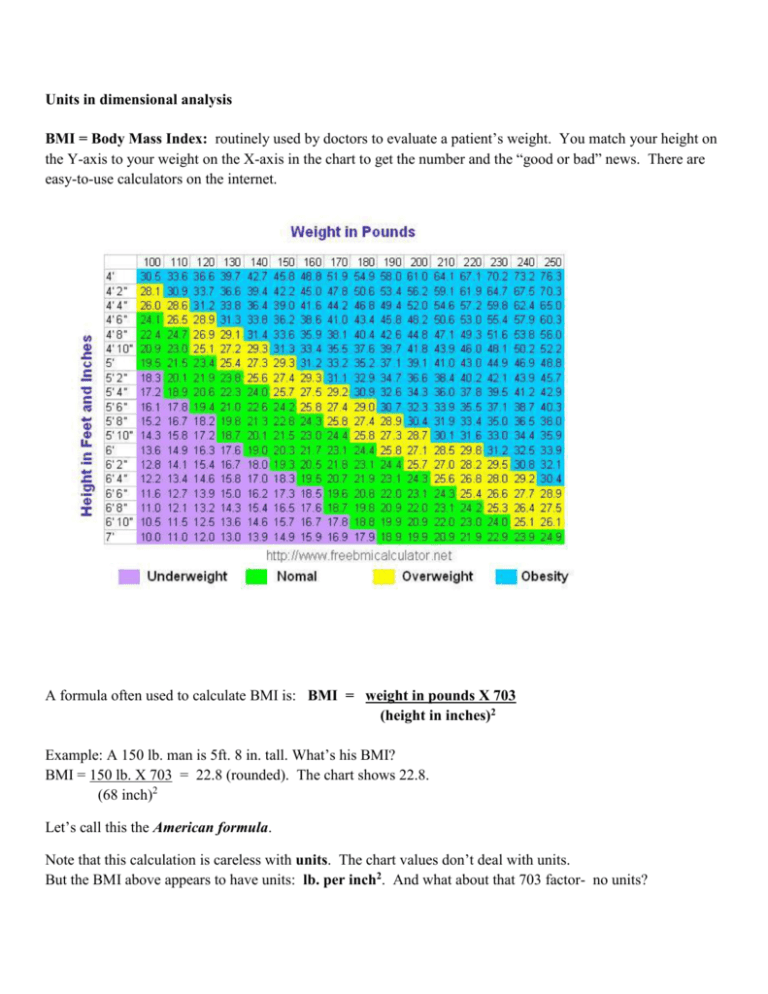Dimensional analysis- Units
advertisement

Units in dimensional analysis BMI = Body Mass Index: routinely used by doctors to evaluate a patient’s weight. You match your height on the Y-axis to your weight on the X-axis in the chart to get the number and the “good or bad” news. There are easy-to-use calculators on the internet. A formula often used to calculate BMI is: BMI = weight in pounds X 703 (height in inches)2 Example: A 150 lb. man is 5ft. 8 in. tall. What’s his BMI? BMI = 150 lb. X 703 = 22.8 (rounded). The chart shows 22.8. (68 inch)2 Let’s call this the American formula. Note that this calculation is careless with units. The chart values don’t deal with units. But the BMI above appears to have units: lb. per inch2. And what about that 703 factor- no units? The original formula for the calculation is BMI = __weight in kg____ (height in meters)2 So, this metric formula was converted to the American formula for easy use in the U.S., where the metric system is not in common use. Now, how do you interconvert these two formulae? That is, where does that 703 factor come from? lb.__ inch2 lb.__ inch2 = _kg_ m2 X (39.37 inch)2 m2 X 453.6 g X _1 kg_ lb. 1000 g = _kg_ m2 (You’re supposed to know these conversion factors.) __lb.__ inch2 X 703 inch2 X kg m2 X lb. = _kg_ m2 inch2 X kg m2 X lb. It’s probably obvious why the 703 (which is actually the coefficient of the conversion factor) is shown in the formula without the units. You see that the 703 is a conversion factor that does have units: If you start with _lb._ and multiply by this conversion factor, the answer will have kg_ units, which is inch2 m2 what the BMI numbers are supposed to be. Let’s redo that example problem: A 150 lb. man is 5ft. 8 in. tall. What’s his BMI? BMI = _150 lb. (68 inch)2 X 703 inch2 X kg_ m2 X lb. = 22.8 kg m2 Do you see which units canceled here. The answer has the proper units: kg/ m2. In working problems, units must not be ignored. Paying attention to the units can help to avoid making some mistakes in the calculation.







